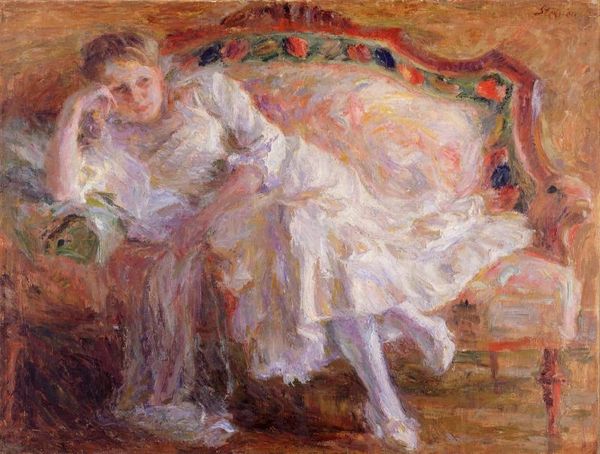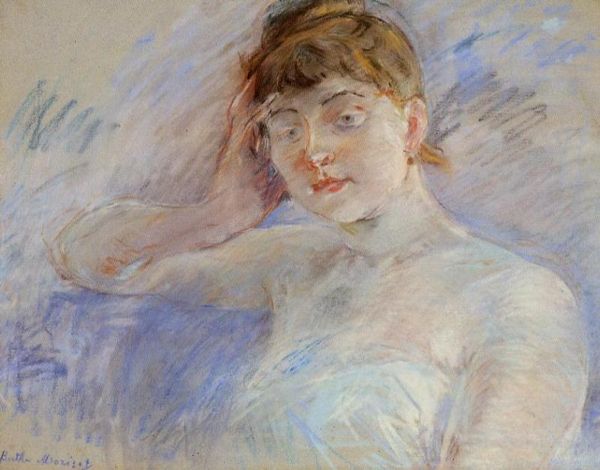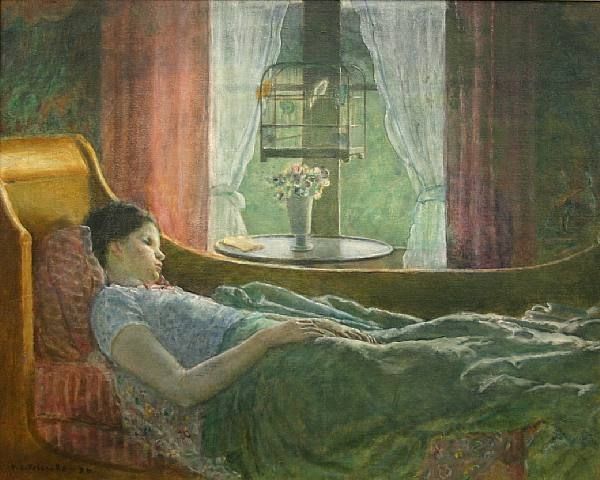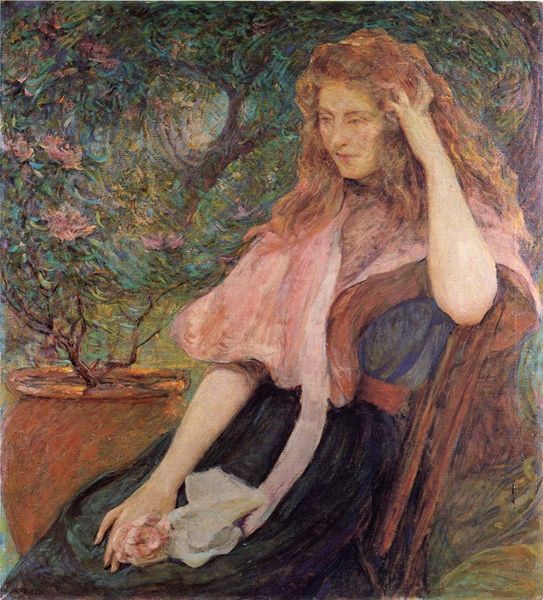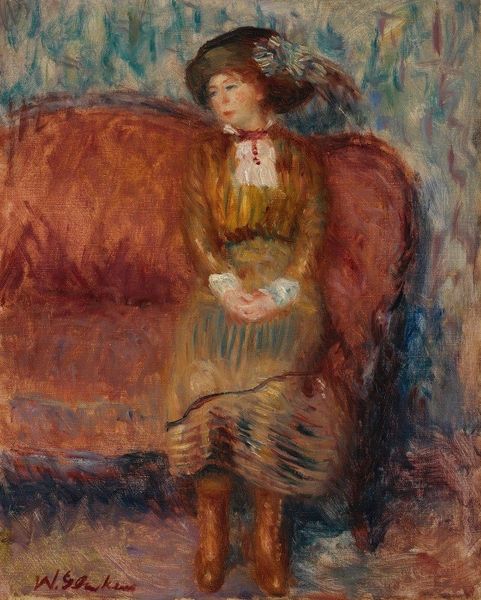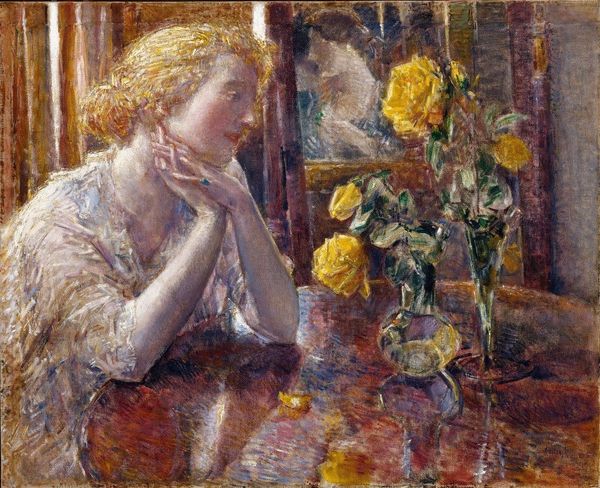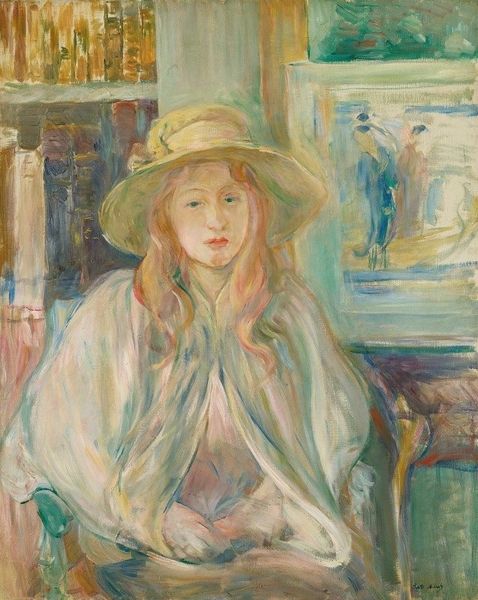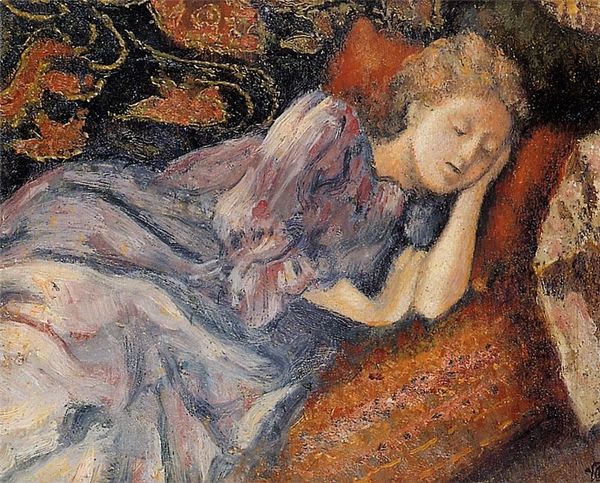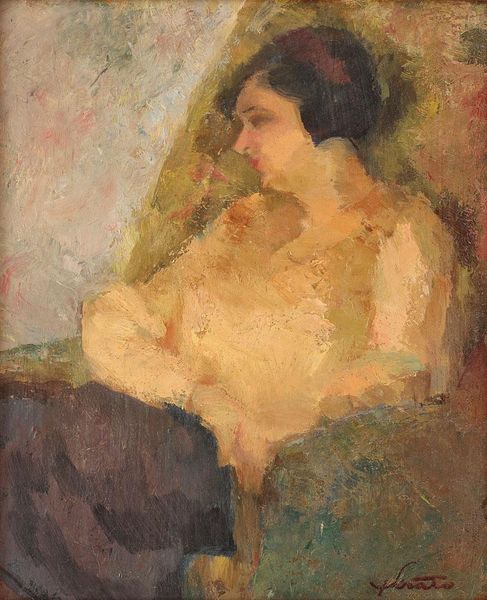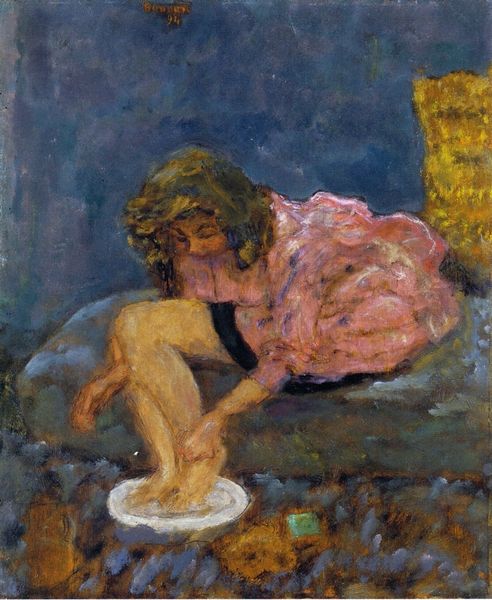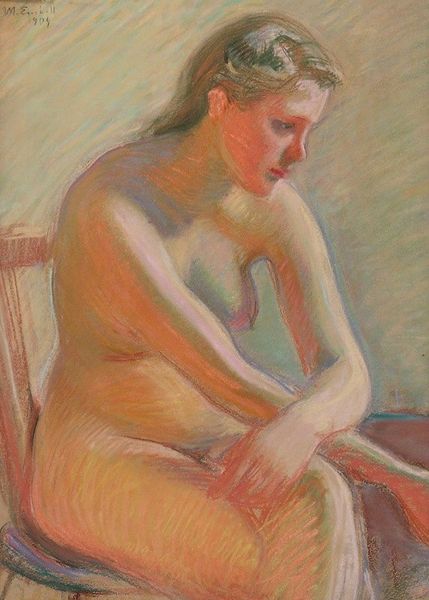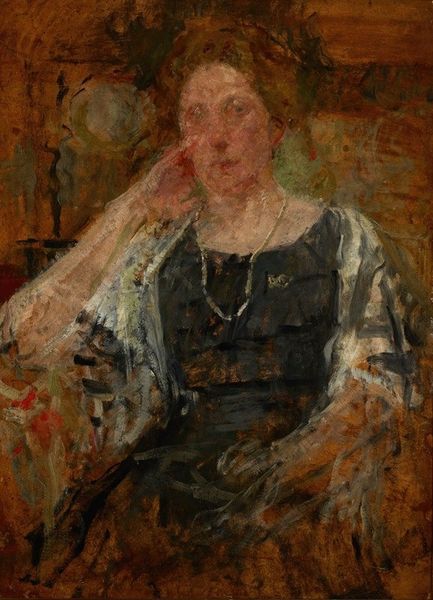
Dimensions: 68.5 x 77 cm
Copyright: Public domain
Editor: This is "Young Girl Lying," an 1893 oil painting by Berthe Morisot. It's such a soft, dreamy image. The brushstrokes are so visible; it feels like I can almost see the labor of its creation. What strikes you most about this piece? Curator: Well, beyond its immediate aesthetic appeal, I see a critical engagement with the material conditions of art-making itself. Morisot wasn't simply representing a young girl; she was also making very deliberate choices about paint application, canvas preparation, and the overall process. Consider the quick, loose brushstrokes. What might those convey about the value Morisot placed on the speed and efficiency of production versus painstaking detail? Editor: I hadn't thought about speed, but it definitely has an unfinished quality. Is she commenting on the changing role of women and the societal expectations of female artists at the time? Curator: Precisely! The impressionistic style, and its embrace of visible brushwork, can be seen as a deliberate rejection of the highly polished, idealized academic style often favored by male artists. By foregrounding the materiality of the paint and the act of painting, Morisot asserted her own agency in the artistic process, implicitly challenging the prevailing power structures within the art world. What about the girl's clothing; does its draping affect your interpretation of Morisot’s work in any way? Editor: It is certainly evocative… I guess the flowing fabric demonstrates the material possibilities that she was dealing with at the time, and how she was making sense of how this material interacts with others… like light or shadow, in order to emphasize texture. I see how her manipulation is part of her language, in a sense. Curator: Exactly. We’re talking about not just the representation of material, but Morisot’s conscious exploration of the *materiality* of painting. By bringing attention to her working method, she underscores labor, commodity, and questions about consumption in painting. Editor: That makes so much sense! I’m going to look at Impressionism very differently now. Thank you. Curator: The pleasure was all mine. Hopefully this perspective will empower you to look even deeper as an artist, and a student.
Comments
No comments
Be the first to comment and join the conversation on the ultimate creative platform.
